英语人教新目标版八年级上册课文目录
UNIT 8 How do you make a banana milk shake?课文翻译及听力音频
UNIT 8 翻译:第 8 单元
Section A 翻译:A 部分
How do you make a banana milk shake? 翻译:你怎么做香蕉奶昔?
Language Goals: Describe a process; Follow instructions 翻译:语言目标: 描述过程; 按照指示
1a Write these words in the blanks in the picture above. 翻译:1a 把这些单词写在上图的空白处。
turn on, cut up, drink, peel, pour, put 翻译:打开,切,喝,剥,倒,放
1b Listen and put the instructions in order. 翻译:1b 听录音,把指令按顺序排列。
-I'm hungry! Let's make a banana milk shake. 翻译:—我饿了!让我们做香蕉奶昔吧。
-How do you make a banana milk shake? -Well, first peel three bananas. 翻译: —你怎么做香蕉奶昔? —嗯,首先剥三个香蕉。
-Three bananas? -Yes. Then cut up the bananas. -OK, I'm finished. -Now put the bananas and ice-cream in the blender. 翻译: —三个香蕉? —对。然后把香蕉切碎。 —好的,我切完了。 —现在把香蕉和冰淇淋放进搅拌机。
Then pour the milk into the blender. -Is this enough milk? -I guess so. 翻译:然后把牛奶倒入搅拌机。 —这牛奶够了吗? —我想是的。
Next, turn on the blender. Finally, pour the milk shake into a glass and drink it. 翻译:接下来,打开搅拌机。最后,把奶昔倒进杯子里喝。
1c Cover the instructions above. 翻译:1c 遮住上面的说明。
Tell your partner how to make a banana milk shake. 翻译:告诉你的搭档如何做香蕉奶昔。
How do you make a banana milk shake? 翻译:你怎么做香蕉奶昔?
First, peel the bananas ... 翻译:首先,剥香蕉皮⋯⋯
2a Listen and complete the chart. —Let's make fruit salad. —OK. 翻译:2a 听录音,完成表格。 —让我们做水果沙拉吧。 —好啊。
Do you have bananas? —Yes, I do. How many bananas do we need? 翻译:你有香蕉吗? —是的,我有。我们需要多少香蕉?
—We need three bananas. —That sounds about right. What else? —Watermelon. —How many watermelons? 翻译: —我们需要三根香蕉。 —听起来差不多。还有什么? —西瓜。 —需要多少西瓜?
—Oh, only one small watermelon. And we need some honey. 翻译: —哦,只要一个小西瓜。我们还需要一些蜂蜜。
—How much honey do we need? —Let's see. 翻译: —我们需要多少蜂蜜? —让我们看看。
Two spoons. —Right. What else? —Apples. —How many apples do we need? 翻译:两勺。 —好的。还要什么? —苹果。 —我们需要多少苹果?
—Two should be enough. And yogurt. —How much yogurt do we need? 翻译: —两个就足够了。还有酸奶。 —我们需要多少酸奶?
—A cup. —Now what else do we need? —Oh, do you have any oranges? 翻译: —一杯。 —现在我们还需要什么? —哦,你有橙子吗?
—I think so. How many oranges do we need? —Only one. 翻译: —我觉得有。我们需要多少橙子? —只需要一个。
This is going to taste great! 翻译:这个尝起来一定很棒!
How many bananas do we need? 翻译:我们需要多少香蕉?
We need three bananas. 翻译:我们需要三根香蕉。
How much yogurt do we need? 翻译:我们需要多少酸奶?
We need one cup of yogurt. 翻译:我们需要一杯酸奶。
yogurt 翻译:酸奶
apples 翻译:苹果
watermelon 翻译:西瓜
honey 翻译:蜂蜜
bananas 翻译:香蕉
oranges 翻译:橘子
spoon 翻译:勺子
cup 翻译:杯子
How many 翻译:有多少
bananas, 翻译:香蕉,
How much 翻译:有多少
yogurt, 翻译:酸奶,
2b Listen again. 翻译:2b 再听一遍。
Write the ingredients under the correct amount in the chart. 翻译:在图表中的正确数量下写下原材料。
-Let's make fruit salad. -OK. Do you have bananas? -Yes, I do. How many bananas do we need? 翻译:—让我们做水果沙拉吧。 —好啊。你有香蕉吗? —是的,我有。我们需要多少香蕉?
-We need three bananas. -That sounds about right. What else? -Watermelon. -How many watermelons? 翻译: —我们需要三根香蕉。 —听起来差不多。还有什么? —西瓜。 —需要多少西瓜?
-Oh, only one small watermelon. And we need some honey. -How much honey do we need? -Let's see. 翻译: —哦,只要一个小西瓜。我们还需要一些蜂蜜。 —我们需要多少蜂蜜? —让我们看看。
Two spoons. -Right. What else? -Apples. -How many apples do we need? 翻译:两勺。 —好的。还要什么? —苹果。 —我们需要多少苹果?
-Two should be enough. And yogurt. -How much yogurt do we need? 翻译: —两个就足够了。还有酸奶。 —我们需要多少酸奶?
-A cup. -Now what else do we need? -Oh, do you have any oranges? 翻译: —一杯。 —现在我们还需要什么? —哦,你有橙子吗?
-I think so. How many oranges do we need? -Only one. This is going to taste great! 翻译: —我觉得有。我们需要多少橙子? —只需要一个。这个尝起来一定很棒!
2c Ask and answer questions about how to make fruit salad. 翻译:2c 提问并回答有关如何制作水果沙拉的问题。
Let's make fruit salad. 翻译:让我们做水果沙拉吧。
OK, good idea. How much yogurt do we need? 翻译:好的,好主意。我们需要多少酸奶?
One cup. 翻译:一杯。
How many apples do we need? 翻译:我们需要多少苹果?
Let me think ... We need two apples. 翻译:让我想想⋯⋯我们需要两个苹果。
OK, and how much ... 翻译:好的,多少⋯⋯
2d Role-play the conversation. 翻译:2d 分角色表演对话。
Sam, I want to make Russian soup for a party on Saturday. 翻译:山姆,我想要在星期六的派对上做罗宋汤。
Can you tell me how? 翻译:你能告诉我怎么做吗?
Sure. First, buy some beef, one cabbage, four carrots, three potatoes, 翻译:当然。首先,买一些牛肉,一个卷心菜,四根胡萝卜,三个土豆,
five tomatoes and one onion. Then, cut up the vegetables. 翻译:五个番茄和一个洋葱。接着切蔬菜。
What's next? 翻译:接下来呢?
Next, put the beef, carrots and potatoes into a pot and add some water. 翻译:接着把牛肉,胡萝卜和土豆放入锅中,放点水。
After that, cook them for 30 minutes. 翻译:然后煮 30 分钟。
Then, add the cabbage, tomatoes and onion and cook for another 10 minutes. 翻译:然后,加入卷心菜,番茄和洋葱,再煮 10 分钟。
OK, that's it? 翻译:好的,就这样吗?
No, one more thing. Finally, don't forget to add some salt. 翻译:不,还有一件事。最后,不要忘记加些盐。
Grammar Focus 翻译:语法焦点
How do you make a banana milk shake? 翻译:你怎么做香蕉奶昔?
First, peel the bananas. Next, put the bananas in the blender. 翻译:首先,剥香蕉皮。 接下来,把香蕉放进搅拌机。
Then, pour the milk into the blender. Finally, turn on the blender. 翻译: 然后,把牛奶倒进搅拌机。 最后,打开搅拌机。
Countable nouns 翻译:可数名词
How many bananas do we need? We need three bananas. 翻译:我们需要多少根香蕉? 我们需要三根香蕉。
Uncountable nouns 翻译:不可数名词
How much yogurt do we need? We need one cup of yogurt. 翻译:我们需要多少酸奶? 我们需要一杯酸奶。
3a Circle the correct word in each question. 翻译:3a 在每个问题中圈出正确的单词。
1. How (much / many) bananas do we need? 翻译:1. 我们需要多少香蕉?
2. How (much / many) sugar do we need? 翻译:2. 我们需要多少糖?
3.How (much / many) bread do we need? 翻译:3. 我们需要多少面包?
4. How (much / many) tomatoes do we need? 翻译:4. 我们需要多少西红柿?
5. How (much / many) cheese do we need? 翻译:5. 我们需要多少奶酪?
3b Complete the questions and answers. Then match them. 翻译:3b 完成问题和答案。然后将它们进行匹配。
3c Write how to do one of the following things. 翻译:3c 写下如何做下列事情之一。
Then tell your partner how to do it. 翻译:然后告诉你的搭档怎么做。
plant a tree 翻译:种一棵树
make beef noodles 翻译:做牛肉面
wash clothes 翻译:洗衣服
take out a book from the library 翻译:从图书馆借一本书
Do you know how to plant a tree? 翻译:你知道怎么种树吗?
First, dig a hole. Then ... 翻译:首先,挖一个洞。然后⋯⋯
Section B 翻译:B 部分
1a Make a list of the things you like in a sandwich. 翻译:1a 把三明治里你喜欢的东西列个清单。
bread 翻译:面包
butter 翻译:黄油
tomato 翻译:番茄
lettuce 翻译:生菜
turkey 翻译:火鸡
onion 翻译:洋葱
1b Ask and answer questions with a partner. 翻译:1b 与同伴一起提问和回答问题。
Find out what he / she likes in a sandwich. 翻译:找出他/她喜欢三明治里的什么。
Do you like lettuce in a sandwich? 翻译:你喜欢三明治里放生菜吗?
Yes, I do. 翻译:是的,我喜欢。
Do you like tomatoes? 翻译:你喜欢西红柿吗?
No, I don't. 翻译:不,我不喜欢。
1c Look at the picture in la. Listen and circle the words you hear. 翻译:1c 看 1a 的图片。听录音,圈出你听到的单词。
—How do you make a cheese sandwich? —Well, first put some butter on a piece of bread. 翻译: —你怎么做奶酪三明治? —嗯,首先在一片面包上涂些黄油。
—How much butter? —Oh, about one spoon. —OK. What else? —Next, cut up some tomatoes. 翻译: —多少黄油? —哦,大约一勺。 —好的。还有什么? —接下来,切一些西红柿。
—How many tomatoes? —Well, maybe one is enough. Put the tomato on the sandwich. 翻译: —多少西红柿? —嗯,也许一个就够了。把西红柿放在三明治上。
Next, cut up an onion. —Sounds good. What about the cheese? —Next, put some cheese on the sandwich. 翻译:然后,切一个洋葱。 —听起来不错。奶酪呢? —接下来,在三明治上放一些奶酪。
—How much cheese? —Not too much, but you can put more if you like. 翻译: —多少奶酪? —不要太多,但如果你喜欢,可以多放点。
—OK. Is that all? —Not quite. Then, put some lettuce on the cheese. 翻译: —好的。就这些吗? —不完全是。然后,在奶酪上放一些生菜。
—Sounds delicious! —Finally, put another piece of bread on top. —Great! 翻译: —听起来很美味! —最后,再放一片面包在上面。 —太棒了!
1d Listen again. Write the ingredients in the order you hear them. 翻译:1d 再听一遍录音。按你听到的顺序写出食材。
-How do you make a cheese sandwich? -Well, first put some butter on a piece of bread. 翻译:—你怎么做奶酪三明治? —嗯,首先在一片面包上涂些黄油。
-How much butter? -Oh, about one spoon. -OK. What else? -Next, cut up some tomatoes. 翻译: —多少黄油? —哦,大约一勺。 —好的。还有什么? —接下来,切一些西红柿。
-How many tomatoes? -Well, maybe one is enough. Put the tomato on the sandwich. 翻译: —多少西红柿? —嗯,也许一个就够了。把西红柿放在三明治上。
Next, cut up an onion. -Sounds good. What about the cheese? -Next, put some cheese on the sandwich. 翻译:然后,切一个洋葱。 —听起来不错。奶酪呢? —接下来,在三明治上放一些奶酪。
-How much cheese? -Not too much, but you can put more if you like. 翻译: —多少奶酪? —不要太多,但如果你喜欢,可以多放点。
-OK. Is that all? -Not quite. Then, put some lettuce on the cheese. 翻译: —好的。就这些吗? —不完全是。然后,在奶酪上放一些生菜。
-Sounds delicious! -Finally, put another piece of bread on top. -Great! 翻译: —听起来很美味! —最后,再放一片面包在上面。 —太棒了!
1e Tell your partner how to make your favorite sandwich. 翻译:1e 告诉你的搭档如何做你最喜欢的三明治。
First, put some butter on a piece of bread. 翻译:首先,在一片面包上涂上一些黄油。
How much butter? 翻译:多少黄油?
About one spoon. 翻译:大约一勺。
2a What kind of traditional food do people eat on special holidays in China? 翻译:2a 在中国,人们在特殊的节日吃什么样的传统食物?
2b Read the article and number the pictures [1-5]. 翻译:2b 阅读文章,给图片编号【1-5】。
Thanksgiving in North America 翻译:北美的感恩节
In most countries, people usually eat traditional food on special holidays. 翻译:在大多数国家,人们通常在特殊节日吃传统食物。
A special day in North America is Thanksgiving. 翻译:在北美地区的特殊节日是感恩节。
In the United States, this festival is always on the fourth Thursday in November, 翻译:在美国,感恩节通常是在十一月的第四个星期四,
but in Canada it falls on the second Monday in October. 翻译:但是在加拿大,感恩节是在十月的第二个星期一。
Thanksgiving is a time to give thanks for food in the autumn and other good things people enjoy in life. 翻译:感恩节是对秋天的食物和人们在生活中享受的其他美好事物表示感谢的时候。
Families see Thanksgiving as a time to get together and usually celebrate it with a big family meal. 翻译:家庭将感恩节视为聚在一起的时刻,通常会用一顿丰盛的家庭大餐来庆祝。
The main dish of this meal is almost always turkey, a large bird. 翻译:这顿饭的主菜几乎总是火鸡,一种大鸟。
To go with the turkey, people often prepare other things, such as gravy, cornbread, mashed potatoes, and pumpkin or apple pie. 翻译:为了搭配火鸡,人们通常会准备其他东西,比如肉汁、玉米面包、土豆泥、南瓜派或苹果派。
Making a turkey dinner 翻译:做一顿火鸡晚餐
Here is one way to make turkey for a Thanksgiving dinner. 翻译:下面是为感恩节大餐做火鸡的一种方法。
First, mix together some bread pieces, onions, salt and pepper. 翻译:首先,将一些面包糠、洋葱、盐和胡椒粉混合在一起。
Next, fill the turkey with this bread mix. 翻译:接着,把刚才的面包混合物填满火鸡。
Then, put the turkey in a hot oven and cook it for a few hours. 翻译:接着,将火鸡放入一个热的烤炉里,烤上几个小时。
When it is ready, 翻译:当这些都完成后,
place the turkey on a large plate and cover it with gravy. 翻译:把火鸡放在一个巨大的盘子里淋上肉汁。
Finally, cut the turkey into thin pieces and eat the meat with vegetables like carrots and potatoes. 翻译:最后,把火鸡切成薄片,火鸡肉可以搭配着胡萝卜和土豆这些蔬菜一起吃。
2c Read the article again and answer the following questions. 翻译:2c 再读一遍文章,回答以下问题。
1. Where do people celebrate Thanksgiving? 翻译:1. 人们在哪里庆祝感恩节?
2. When do people celebrate it? 翻译:2. 人们什么时候庆祝它?
3. Why is Thanksgiving important? 翻译:3. 为什么感恩节很重要?
4. How do people celebrate it? 翻译:4. 人们如何庆祝它?
5. What is the main dish of the Thanksgiving meal? 翻译:5. 感恩节大餐的主菜是什么?
2d Here are the instructions for making a turkey dinner written in a different way. 翻译:2d 以下是用另一种方式写的制作火鸡晚餐的说明。
Put them in order. Write First, Next, Then and Finally. 翻译:把它们按顺序排列。用上 First, Next, Then 和 Finally。
2e What do you think is the most special day in China? 翻译:2e 你认为中国最特别的日子是什么?
Answer the following questions. 翻译:回答以下问题。
1. When is this special day? 翻译:1. 这个特别的日子是什么时候?
2. What are the reasons for this special day? 翻译:2. 为什么会有这个特殊的日子?
3. Do people give thanks for anything on this day? 翻译:3. 在这一天,人们会感谢什么吗?
4. Do people remember anything or anyone on this day? 翻译:4. 人们在这一天会纪念什么人或事吗?
5. How do most people celebrate this day? 翻译:5. 大多数人是如何庆祝这一天的?
6. Is there any traditional food? 翻译:6. 有传统食物吗?
7. What are the main dishes? 翻译:7. 主菜是什么?
8. Can you make these dishes? 翻译:8. 你会做这些菜吗?
3a Read the recipe below and fill in the blanks with the words in the box. 翻译:3a 阅读下面的食谱,用方框中的单词填空。
cook, next, wash, finally, have, enjoy, first, cut 翻译:烹饪,然后,清洗,最后,拥有,享受,首先,切割
3b Think of a favorite food in your hometown. 翻译:3b 想想你最喜欢的家乡食物。
Make a list of ingredients. 翻译:列一张配料表。
3c Write a recipe for your favorite food. 翻译:3c 为你最喜欢的食物写一份食谱。
Use 3a and 3b to help you. 翻译:用 3a 和 3b 中的内容来帮助你。
4 Make up a crazy recipe with your partner. 翻译:4 和你的搭档编一个疯狂的食谱。
Then tell another pair of students how to make this crazy food. The other pair will draw it. 翻译:然后告诉另一对学生如何制作这道疯狂的食物。另外两个人会画出来。
First, put some yogurt on a piece of bread. 翻译:首先,在面包上放些酸奶。
Then, cut up one apple and an onion and put them on the yogurt ... 翻译:然后,切一个苹果和一个洋葱,把它们放在酸奶上⋯⋯
Self Check 翻译:自我检测
1 Number these instructions for making tomato and egg soup in the correct order. 翻译:1 按照正确的顺序给番茄鸡蛋汤的制作说明排序。
Then complete the instructions with the words in the box. 翻译:然后用方框中的单词完成说明。
First Next Then Finally 翻译:首先 然后 接着 最后
2 Write questions and answers using the words in brackets. 翻译:2 使用括号内的单词写问题和答案。
最新学习记录 更新时间:2025-12-22 01:40:25



 切换教材
切换教材